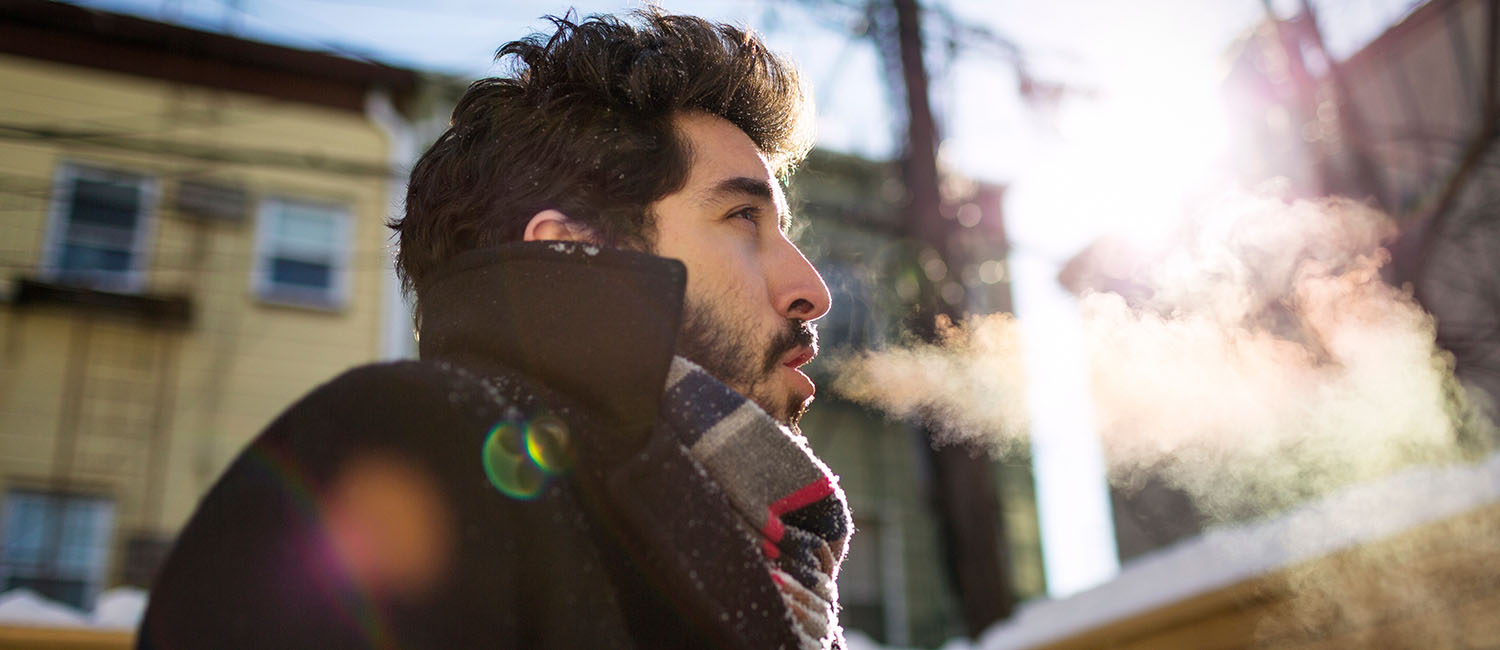How to Manage the Heat in a New York Rental
Winter is here, and if you live in New York, your heat has kicked on. But if you live in a rental, especially in an apartment building with a shared heating system, you may have some problems keeping your home warm enough, or even cool enough, for comfort. Most older buildings have shared heating systems, meaning each unit doesn’t have its own thermostat. So you may think you’re stuck with the heat or cold. If you’re trying to stay comfortable and avoid energy waste, what are your options?
What if it’s too hot?
New York apartments are notorious for being almost ridiculously overheated in the winter. This is actually for a historical reason. A lot of buildings in New York—around 80% in NYC—are operating on old steam heat systems. These became popular about a century ago when boilers became more affordable and less, well, explosive. Specifically, a lot of these systems were installed around the 1918 flu pandemic. In response to the flu, health officials started the “fresh air movement,” where everyone was encouraged to leave their windows open to encourage air flow, even in the middle of winter. These steam systems were built with very large boilers to keep apartments warm despite the windows being wide open, so they get hot.
But times have changed, and between changing lifestyles and lack of maintenance by building owners, these systems have become less and less effective and efficient. And so a lot of New York tenants spend every winter in a boiling hot apartment with clunky, loud radiators, with seemingly no choice but to leave the windows wide open. And since buildings are a large source of greenhouse gas emissions (the biggest source in NYC), this is a huge waste of energy!
Since you probably don’t have a thermostat in your unit, here are some strategies to help manage excessive heat and avoid energy waste.
- Consider talking to your landlord. While there are no regulations about apartments being too warm, energy is getting more and more expensive, and your landlord may not know just how much they’re overheating the building. And with new efficiency standards coming for NYC buildings, your landlord might be thinking about the heat already!
- Turn off your radiators by turning the valve at the base clockwise to close. Better yet, ask your landlord to install thermostatic radiator valves. Standard valves are only on or off—there’s no in between. But thermostatic valves allow you to control the amount of heat each radiator emits individually.
- Close the air valve on your radiator. The air valve allows for air to escape the radiator as it cools, so sealing this valve essentially prevents the fresh steam from the boiler from moving through the radiator. This should help the radiator cool off a bit and can be done simply with tape. But be careful! The air valve gets quite hot to the touch, so don’t burn yourself.
- Cover the radiators so they don’t emit as much heat. You can make or buy nice-looking radiator covers, but you can even just use a blanket. Radiators don’t get above 215°F, which isn’t hot enough to start a fire. Just make sure you use natural fibers like cotton, not synthetics that might melt. There are also smart radiator covers available if your landlord is interested in a simple retrofit. These will help manage the heat and save energy and money!
And if it’s too cold?
On the other hand, you may be finding yourself too cold for comfort. The reality of these old steam systems is that they’re very unbalanced, meaning that certain apartments, or even rooms, may not be getting enough heat. Over the years, systems may have been neglected or only partially updated, meaning the steam doesn’t move evenly throughout the building. So, while your upstairs neighbor may be boiling, you might be quite chilly!
If changing the thermostat isn’t an option, here are some strategies for managing a chilly apartment.
- Know your rights as a tenant. In New York State, landlords are legally required to keep rentals at 68 degrees during the day from October through May. Overnight temperature regulations vary slightly by county, but generally, your landlord is responsible for providing safe levels of heat. If your heat isn’t meeting these requirements, contact your landlord immediately, and if they are not responsive, contact 311 in NYC or your local housing authority.
- Insulate your apartment from cold drafts. There are lots of simple, affordable tricks to insulate and prevent heat seeping out of your apartment, from weather stripping to door sweepers. The more you can stop drafts, the warmer your space will stay.
- Make sure your ceiling fans are spinning counterclockwise to help circulate warm air back down from the ceiling.
- Check that your radiator valves are open. Typically this means turning the valve counterclockwise, or if there is a thermostatic valve, turning it towards a larger number. (If you have forced air or baseboard heating, make sure the vents or flaps are open!)
- Remove radiator covers or blockages. If you have covers (especially insulating ones, like wooden covers) or other objects around your radiators, try moving them away to allow better flow of warmth through the room. You can also use a fan to help push warm air from the radiator around the room.
- Do some dusting! Accumulation of dust reduces efficiency of all types of heating system because it acts as an insulator. For radiators, make sure you’re cleaning them as well as you can. For vents and baseboard heating, same deal—make sure there’s no dust accumulation.
- Ask your landlord about radiator maintenance. If your radiators don’t seem to be working, or if they have warm spots and cool spots, chances are they need to be bled. This is a simple maintenance procedure, but can only happen when the heating system is off so definitely talk to your landlord! Proper radiator maintenance is crucial to efficient heating.
Living in a multi-unit building with shared heating systems can be frustrating, especially if you’re trying to be energy-conscious. But by taking some proactive steps, you can help keep your apartment cozy – and not too hot—this winter.

Ashley Robinson
Ashley Robinson is a Chicago-based writer with a focus on sustainable food systems, green living, and politics. She holds a BA in Government from Harvard University and spends her free time cooking and gardening.




